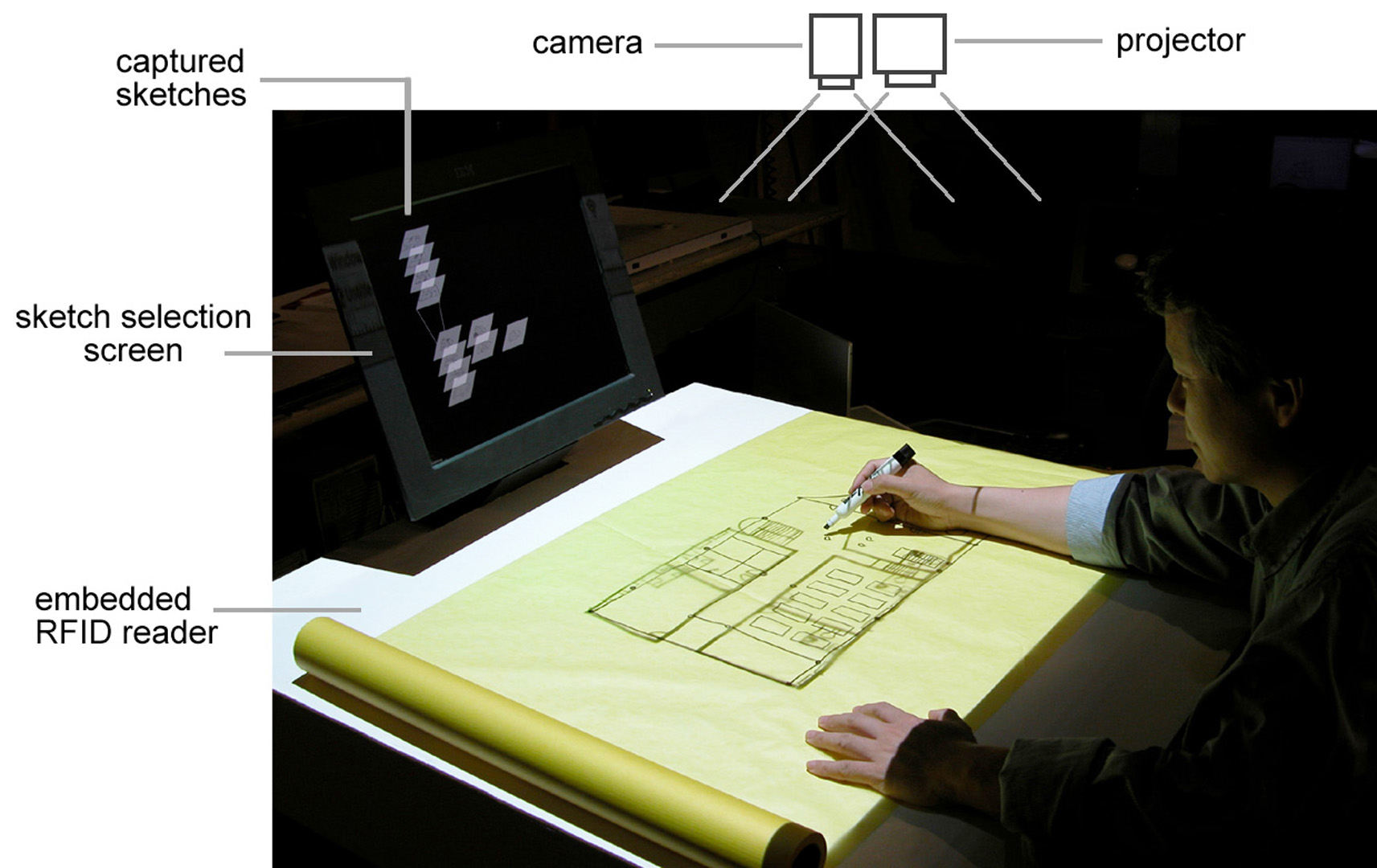“egaku: Enhancing the Sketching Process” by Yoon, Ryokai, Dyner, Alonso and Ishii
Conference:
Type(s):
Entry Number: 042
Title:
- egaku: Enhancing the Sketching Process
Presenter(s)/Author(s):
Abstract:
Architects sketch using a translucent vellum tracing paper with a thick pencil or marker. The translucency of the paper allows architects to employ a layer-drawing technique for the exploration of ideas derived from their basic design. For example, working with a single base layer such as a map of the site, architects can design upwards of hundreds of possible variations. This ultimately leads to a great pile of drawings, which compose the piles of papers typically strewn about an architecture studio. Individually, these “referential” sketches represent small pieces of a much larger design concept [Graves 1977]. Although they are valuable, they are often cumbersome to manage during the ideation process because it interrupts the flow of ideation, and even difficult to understand when a single sketch is taken out of associated sketches.
Traditionally, augmented drawing systems attempt to digitize the sketching process by eliminating the paper interface, and having users draw on a digital sketching surface with digital ink [Aliakseyeu 2002; Mackay et al. 1993]. This, in effect, removes the tactility and intimacy offered by the basic tools of pencil and paper architects are used to.
References:
1. Aliakseyeu, D., 2002, “Direct Manipulation Interface for Architectural Design Tools”, Proceedings of CHI
2. Graves, M., 1977, “The Necessity for Drawing: Tangible Speculation”, Architectural Design 6
3. Mackay, W., Velay, G., Carter, K., Ma, C., and Pagani, D., 1993, “Augmenting Reality: Adding Computational Dimensions to Paper”, Communications of the ACM
Acknowledgements:
We thank Bill Mitchell, Yao Wang, Carlo Ratti, and TMG.




